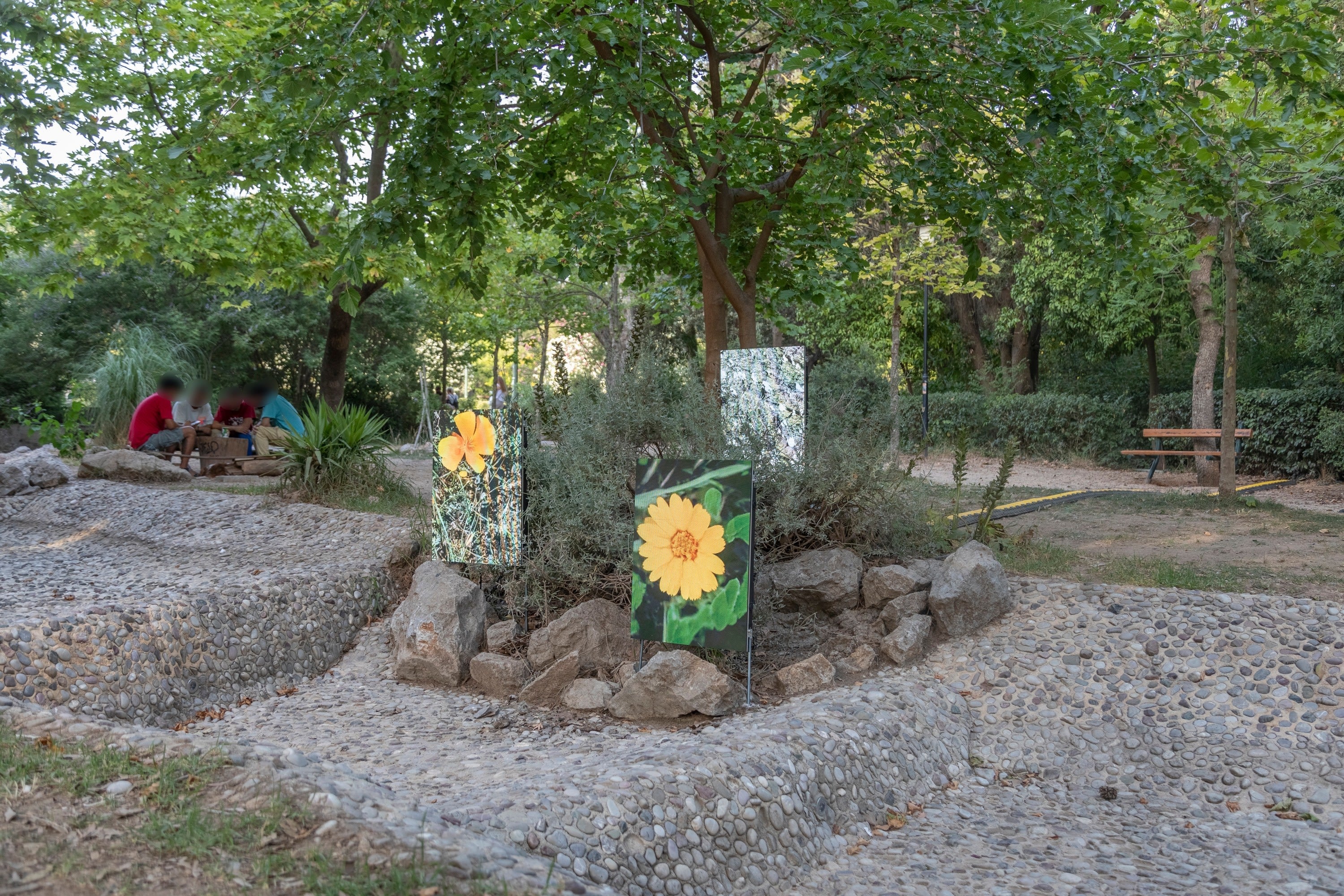Circadian Bloom, 2021
Installation of real-time GAN generated imagery
Dimensions variable
Courtesy of Gazelli Art House Ltd.
Copyright The Artist
About The Artwork
Circadian Bloom is an ongoing project that is the start of an exploration into ideas around other, non-human ways of keeping time. In this iteration, each screen is filled with an image of a plant that has a particular type of chronological clock - one that will consistently open and close its flowers at fixed times of the day - so that the piece essentially works like a kind of clock. These plants behave this way regardless of external stimuli - for example: a night-blooming cactus will only bloom at night, even if it is exposed to darkness during the daytime and light at night; a morning glory moved into permanent darkness will still flower in the mornings. The clock is designed to start at dawn and end at dusk, and changes daily to reflect the precise longitude and latitude it is programmed for. Throughout the day the imagery of the different flowers evolve in real time in synchrony with their natural counterparts, blooming and closing at the correct time of day. Because the length of daylight changes throughout the year, looking at it at the same time will result in different flowers being shown (7am will be in darkness in winter months, but will be daylight in summer). Circadian Bloom harks back to an earlier, medieval way of constructing time in temporal hours when the hours of available daylight divided into twelve, so that an hour was dependent on when and where a person was. The project is inspired by Carl Linnaeus’ idea of a floral clock or “horologium florae'' that he proposed in his Philosophia Botanica in 1751 after observing this phenomenon of certain flowers opening and closing at set times of the day. But since then, the flower clock has remained, mostly, a concept. A flower’s circadian rhythm is “filled with complications” – geography, climate, light levels, seasonality all play a part – which makes it nearly impossible to grow a true horologium florae that would cover the entire day and function as a clock. But by working digitally, I am able to make it real and create a tension between the highly precise and accurate time keeping methods that sit inside computers and the impractical, imprecise images that result. Technology (and science) is hugely reliant on being able to keep standard, accurate time. Every computer either uses a quartz crystal clock contained within it or syncs to a cesium atomic clock to maintain micro second level time. It is necessary for most computational processes to work. There is something quite absurd about taking this accuracy and visually obscuring it so that the resulting clock can only really be understood as such as long periods of observation over days, revealing that it is not just visuals of flowers but something that is in sync with the natural landscape. Advancements in timekeeping have been driven by commercial reasons and the necessity for people & places to coordinate, evolving from being linked to natural cycles (sun, moon, seasons) to something mechanical, reproducible and split into smaller and smaller units. Language and metaphors are needed to talk about the climate crisis that sit outside of the systems that have helped lead to it; this project is the start of an exploration into this and a way to think about other, non-human ways of keeping time. Originally commissioned by The University of Salford Art Collection, the project has had further support from the Delfina Foundation.
About Anna Ridler
Anna Ridler (B. 1985) is an artist and researcher who works with information and data. She is interested in systems of knowledge, with a desire to know and to make this process of knowing available. She works with new technologies, exploring how they are created in order to better understand society and the world. Her process often involves working with collections of information or data, particularly self-generated data sets, to create new and unusual narratives in a variety of mediums and how new technologies, such as machine learning, can be used to translate them to an audience.
She holds an MA in Information Experience Design from the Royal College of Art and a BA in English Literature and Language from Oxford University along with fellowships at the Creative Computing Institute at University of the Arts London (UAL), Ars Electronica, Edinburgh University and the Delfina Foundation.. Her work has been exhibited at cultural institutions worldwide including the Victoria and Albert Museum, Tate Modern, the Barbican Centre, Centre Pompidou, HeK Basel, the ZKM Karlsruhe, Ars Electronica, Sheffield Documentary Festival and the Leverhulme Centre for Future Intelligence. She was a European Union EMAP fellow and the winner of the 2018-2019 DARE Art Prize. Ridler has received commissions by Salford University, the Photographers Gallery, Opera North, Live Cinema UK and Impakt Festival. She was listed as one of the nine “pioneering artists” exploring AI’s creative potential by Artnet and received an honorary mention in the 2019 Ars Electronica Golden Nica award for the category AI & Life Art. She was nominated for a “Beazley Designs of the Year” award in 2019 by the Design Museum for her work on datasets and categorisation.









